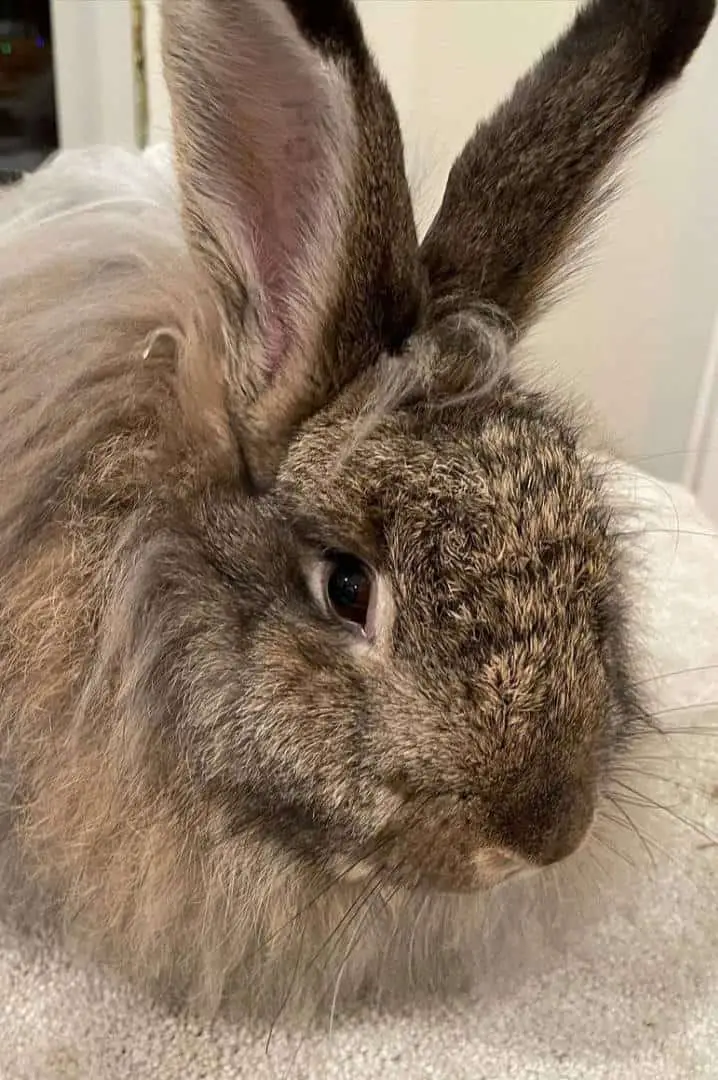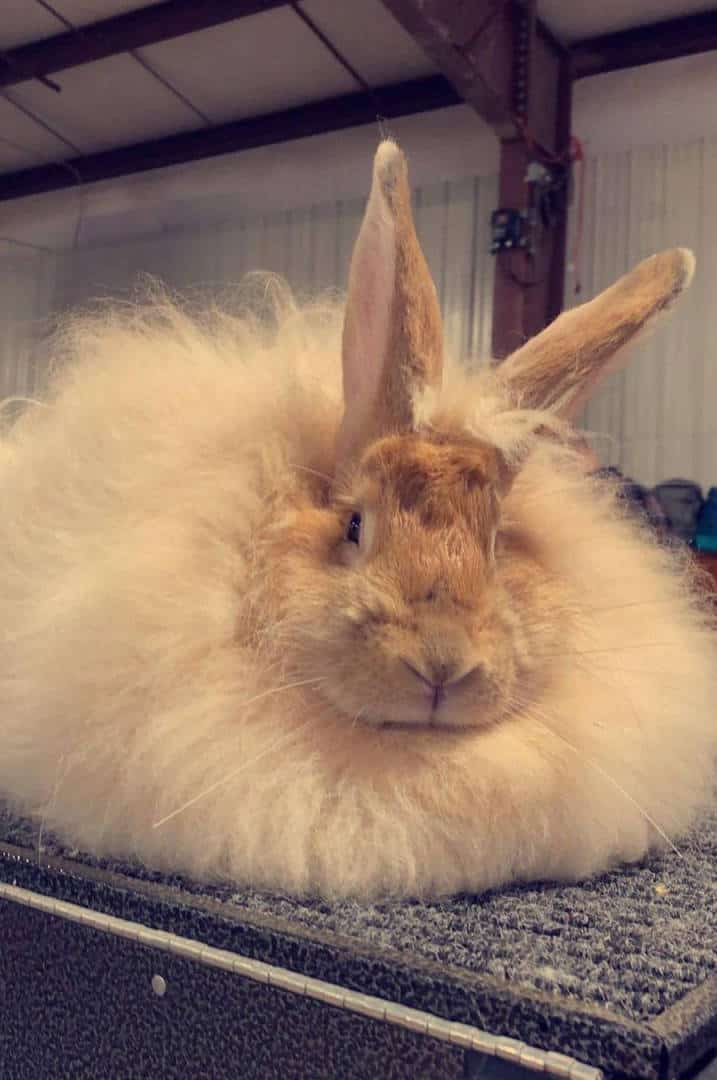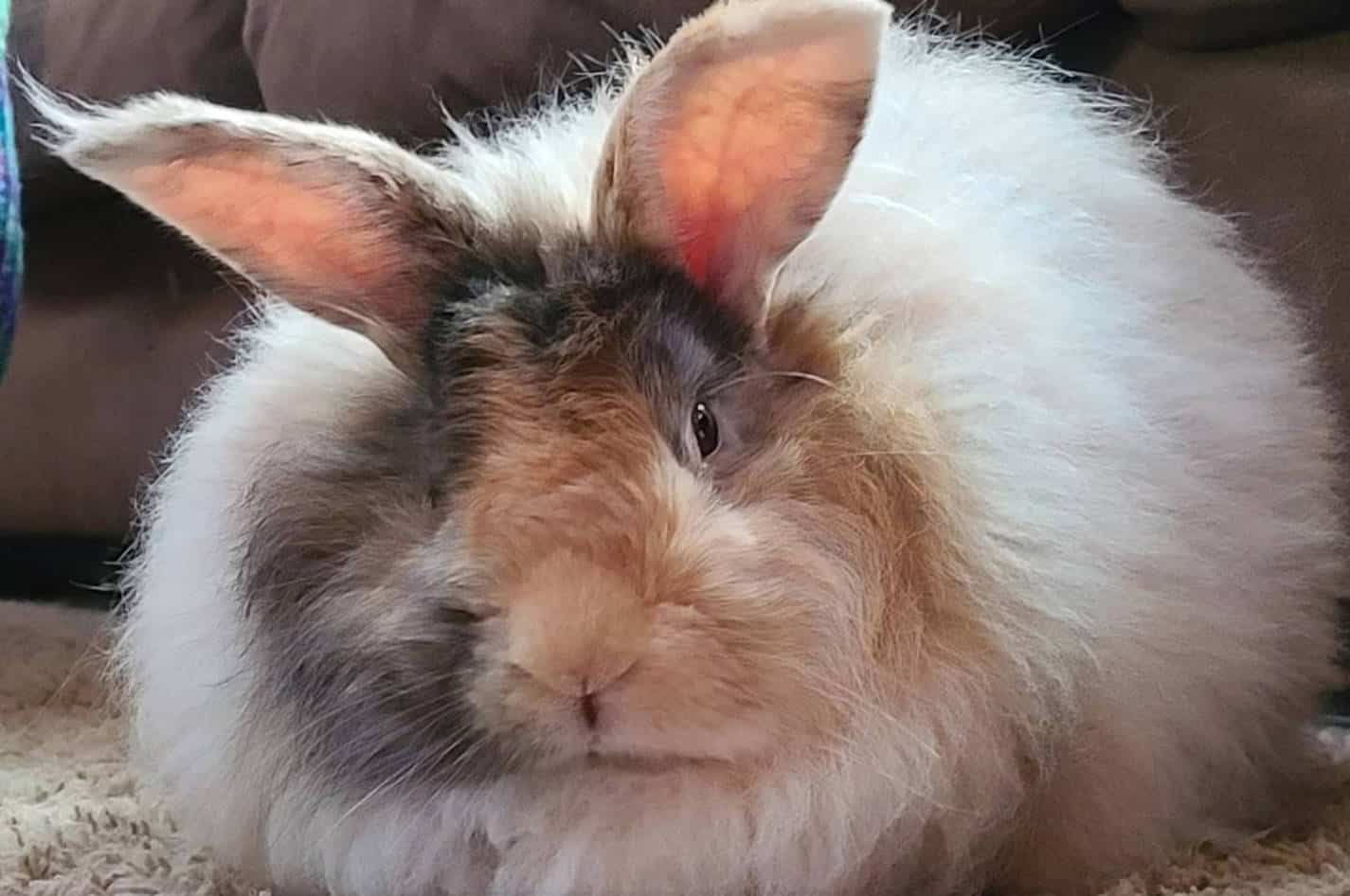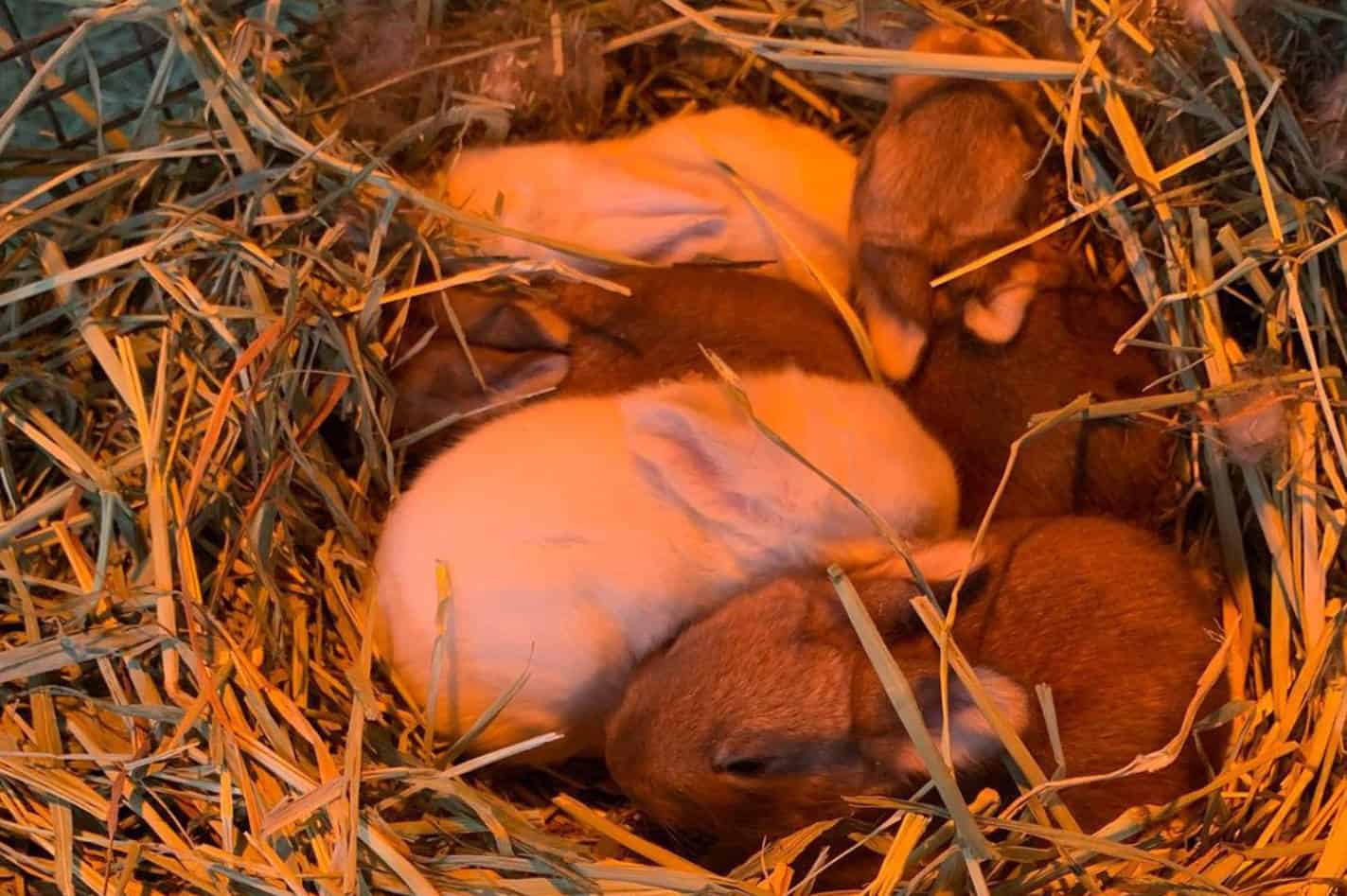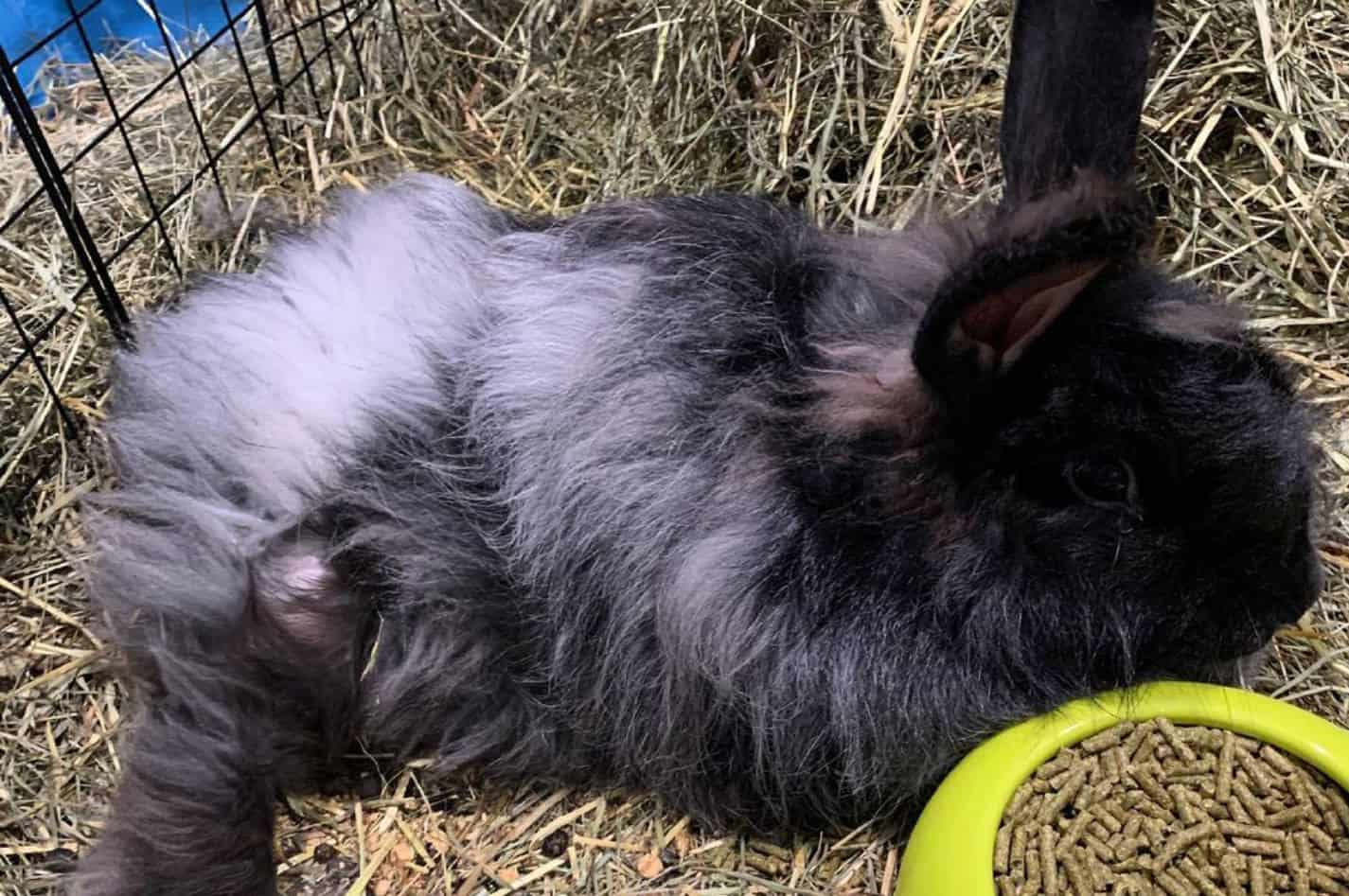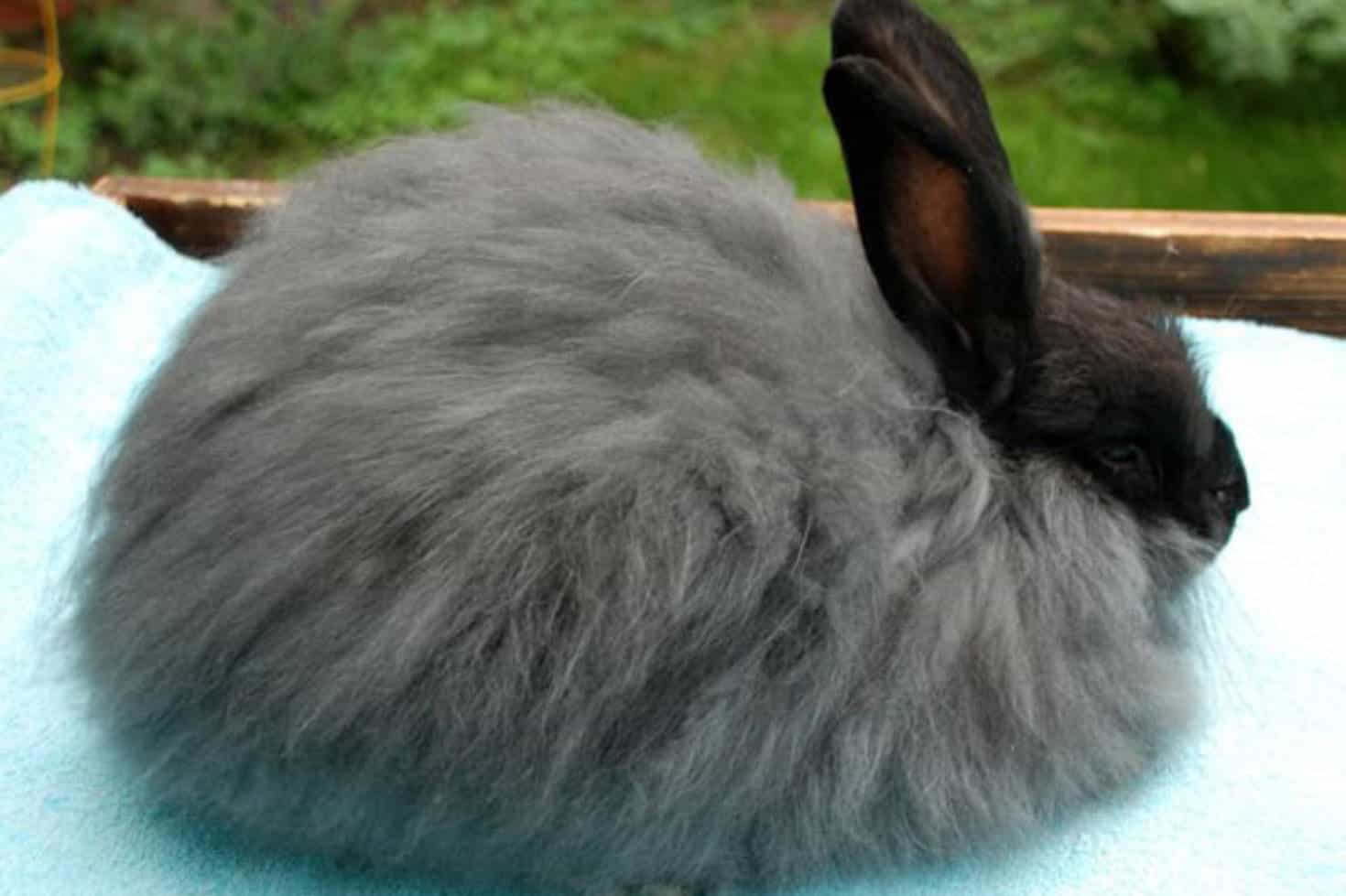French Angora rabbits often attract attention at most rabbit shows. Well, who wouldn’t be enamored with this giant breed’s fluffy coat, friendly disposition, and adorable appearance?
If you’re thinking of adding this sturdy yet cute rabbit as part of your family, read on to learn more about its characteristics, care, and maintenance.
An Overview of the French Angora Rabbit
Family | Leporidae |
Species | Orytolcagus Cuniculus |
Weight | 7.5 to 10. 5 pounds |
Size | Large |
Body Shape | Commercial |
Lifespan | 7-12 years |
Color form | Self, shade, broken, agouti, pointed white, wide band, ticked |
Temperament | Social, calm, friendly |
Best suited for | Families with older children, house rabbits, singles, outdoor rabbits, indoor rabbits |
Comparable Breeds | Giant Angora Rabbit, English Angora Rabbit |
Diet | Fresh food, hay, pellets |
Grooming Level | High |
Care Level | Moderate |
Minimum cage size | 2 feet by 2 feet |
The Origin of the French Angora Rabbits
In 1723 sailors from Angora (now known as Ankara), Turkey, brought giant, furry rabbits to France. These rabbits closely resemble the French Angora that is known today.
The first Angoras that arrived in the US were named Angora Woolers. The American Rabbit Breeders Association (ARBA) used the term for any rabbit that can grow thick coats for wool production.
All “Angoras” had similar characteristics and there were no clear distinctions between each kind.
In 1944, the ARBA decided to classify these rabbits into four breeds: Satin Angora, Giant Angora, English Angora, and French Angora. The French Angora is the second most in-demand Angora breed, next to the English Angora.
Appearance and Breed Standard
Size
The commercial body type of the French Angora rabbit is characterized by a strong and robust frame. The ARBA lists it as the second-largest Angora rabbit breed, coming next after the English Angora.
The ideal weight of the French Angora is about 8.5 pounds. However, any weight between 7.5 and 10.5 pounds still falls within the breed standard.
Shape
The French Angora’s strong and firm body is oval-shaped. Its head also takes the same shape and should be proportional to the whole body.
Coat
Its thick coat has two layers: a lumpy guard hair that grows past the undercoat, and a chunky, frizzy wool coat.
You will not find any wool on the French Angora’s face, front feet, toes, and ankles. However, its hind legs and ears may have some tufting.
Colors
According to the ARBA, the following are the coat varieties of the French Angora Rabbit.
Coat Variety | Description |
Broken | A white body with blotches of other colors |
Agouti | A brown color similar to wild rabbits and mixed with small clumps of tan, fawn, blue and black. Types: Chocolate Agouti. Chestnut, Lynx, Opal, and Copper |
Self | One color for the whole body Types: black, white, lilac, chocolate, and blue |
Wideband | Color pattern is similar to the Agouti but the tufting does not have dark ends Types: Fawn, Red and Cream |
Shaded | Body is light-colored while feet, tail, head, and ears are dark-colored. Types: Sable, Seal, Pearl, Smoke Pearl, Lilac Tortoiseshell, Chocolate Tortoiseshell, Blue Tortoiseshell, Lilac Tortoiseshell, and Tortoiseshell |
Ticked | One color for the whole body but with guard hairs of another color spread all over. Types: Chocolate Steel, Blue Steel, Steel, and Lilac Steel |
Pointed white | All white coat with ears, muzzle, and feet of a different color. |
Chinchilla | Chinchilla: the body is pearl and late with bands of alternating blue or gray and pearl Chocolate Chinchilla: pearl and brown wool with chocolate or pearl bands Squirrel Chinchilla: gray or blue wool with similarly colored bands Lilac Chinchilla: the body is a combination of pearl and lilac with bands of the same colors |
Temperament and Personality
The French Angora rabbit may have been originally bred for its wool and meat, but it can also be a great pet. They just need a lot of attention, affection, and love to thrive in a domestic setting.
These adorable bunnies love to hop and explore their environment. Their sweet and docile nature becomes even more pronounced when they are allowed out of their enclosures to socialize.
You might notice their distinct personality once you get to know them, but they are generally calm, even-tempered, and friendly to humans.
French Angoras are perfect for families with older children who already know how to handle larger pets. They can also be great for couples who are looking forward to being pet parents.
Litter Training Behavior
These bunnies are more challenging to litter train than dogs and cats but it can be possible with a lot of time and patience. Potty training rabbits can take longer than other pets and rewards are an essential part of the process.
Play Behavior
French Angoras have a tendency to turn your shoes or slippers into chew toys since they love to gnaw on anything. They also enjoy playing with toys to entertain themselves.
Reproduction
French Angora rabbits reproduce like the domestic bunnies that they are. Breeding begins between five to eight weeks old and can happen any time of the year.
The usual method is forced breeding where male rabbits are held in a cage and the female joins him after a few days. Mating usually takes a short time and you will know it’s over when the buck (male rabbit) leaves the doe (female rabbit) alone.
Gestation usually takes 38 days. You will know if the mother rabbit is ready to give birth when she seems restless and starts to look for a nesting place. She will also ignore food and water that is given her and refuses to socialize.
Usually, a mother rabbit gives birth to three to five offspring. She will leave and cover her nest after cleaning and nursing her baby bunnies.
She only comes back in the evenings to nurse them for a short while. The baby French Angoras will open their eyes after seven days and wean from drinking milk at around 10 to 12 days.
A doe can get pregnant around three to four times a year. However, the success of the pregnancy and birthing process will all depend on the mother’s health and environmental conditions.
Lifespan
French Angoras can live for up to seven to 12 years. Their usual health issues stem from their thick and wooly coats. Here are some of their medical concerns and their corresponding treatment.
Wool Block: A Common French Angora Health Issue
What It Is:
Similar to cats, rabbits groom themselves to keep clean. They tend to swallow some loose hair, especially when they’re shedding too much. French Angoras have thicker, denser coats so there’s a greater chance that they’ll ingest huge chunks of fur.
Rabbits do not have a cat’s ability to expel the hair that they’ve swallowed. Therefore, fibers can pile up inside their stomachs and cause intestinal blockage and digestive problems. When this happens, a rabbit will refuse to eat or drink because it feels stuffed.
Here are some symptoms of the wool block that you need to observe in your French Angoras.
- Not getting thirsty
- Poor appetite
- Dry or small feces
- Infrequent bowel movements or urination
- Lethargy
- Feces with strands of wool
How to Treat It:
It would be best to seek a veterinarian’s advice as soon as you observe any of these symptoms. The wool block is a serious condition that may cause your rabbits to die. Your vet will know what to do with your bunny’s condition.
It would also help if you feed your rabbits only hay. Stop giving them pellets as soon as you observe any of the symptoms.
Other French Angora Rabbit Health Issues
Fur Mites
What It Is:
These tiny parasites look like dandruff at first glance. They burrow deep into the rabbit’s skin and cause intense itchiness and irritation. Rabbits would scratch profusely when infested with these bugs resulting in loss of wool and red, bald patches.
How to Treat It:
Medicines such as Revolution, Cydectin, and Ivomec are treatments for fur mites.
Overheating
What It Is:
The French Angora’s thick and dense coat helps them stay warm during cold months. However, these fluffy layers can lead to overheating during hot months.
If you see your rabbit breathing heavily while sprawled in its space, it might already be overheating. You may also notice their ears becoming reddish and warm to the touch.
How to Treat It:
If your rabbits are staying outdoors, transfer them inside or to a cooler and shadier place. It would also help them cool down if you place frozen water bottles near their bed. Licking the cold moisture from the bottle and inhaling the cool air will make them feel refreshed.
How to Care for Your French Angora Rabbit
Compared to other Angora breeds, the French Angora is not too high maintenance. Their care revolves mostly around the maintenance of their fur. Remember that most of their health issues are caused by their thick coat.
Coat Care and Maintenance
- Brush their coat regularly to keep them clean and mat-free.
- Blowdry their wool to keep them separated and tangle-free.
- Avoid giving your rabbits baths since it makes them anxious and stressed.
- Shear their wool three to four times a year to maintain an ideal coat length of two to three inches.
Habitat Set-up and Condition
- Provide an enclosure that measures 36 square feet or bigger. It would benefit your bunnies if their cage has ample resting and litter box space. This set-up will prevent them from sitting on their own waste.
- Make sure to give them space aside from their enclosures. French Angoras love to explore and hop so having the freedom to do these activities will keep them happy.
- Keep their space safe from electrical cords, small toys, other pets, toxic chemicals, and dangerous tools.
- Furnish their space with absorbent, fiber-based bedding. Clean it regularly to prevent dust from accumulating.
Temperature
- Protect your rabbits from harsh weather conditions such as extreme heat, snow, and cold wind.
- Keep the temperature between 50-70 degrees Fahrenheit whether they stay indoors or outdoors.
- During the summer months provide them with terracotta shelters, frozen water bottles, and fans to make them as comfortable as possible.
A French Angora’s Diet
Just like any other rabbit breed, a French Angora’s diet consists mostly of hay and pellets. You must give fruits and vegetables sparingly to prevent digestive problems and other health issues.
Store-bought treats and fruits high in sugar should also be given in moderation. Please provide them with fresh and clean water to avoid dehydration.
Another rule of thumb is to include at least 13% fiber in their diet as a way of preventing wool block.
Age | Recommended Diet |
Three to seven months | ● Alfalfa hay and pellets ( as much as they like) ● One kind of vegetable per day |
Seven months to one year | ● Timothy hay (as much as they want) ● Pellets ( half a cup per six pounds body weight) ● Vegetables ( two pounds per six pounds body weight) ● Fruits ( 2 ounces up to twice a week) |
One year to six years | ● Hay (unlimited amount) ● Pellets ( ¼ cup per six pounds of body weight given every day) ● Vegetables (¼ cup per six pounds of body weight given every day) ● Fruit ( up to two ounces twice a week) |
Six years and older | ● You may follow the same dietary plan as adult rabbits ● If you notice that they are losing weight, you may increase the pellet quantity. ● You may also add some alfalfa hay to their diet until they have regained their weight. |
Summary
French Angora rabbits are beautiful, calm, and friendly, making them delightful as pets. If you decide to bring one home, make sure to allow time to care for them, especially their coats. Your effort will be greatly rewarded with their adorable features and friendly disposition.
